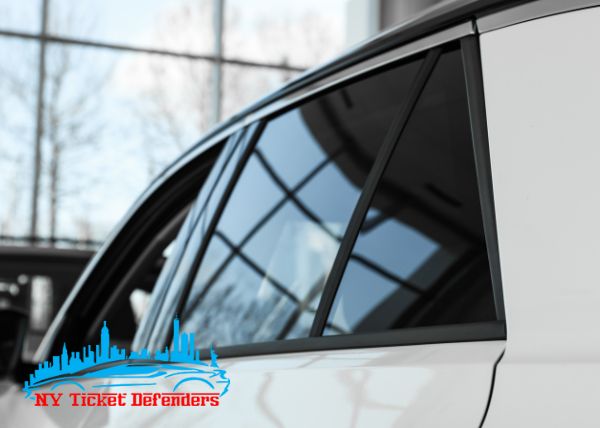How Vehicle Window Tinting Safeguards Your Vehicle's Inside
How Vehicle Window Tinting Safeguards Your Vehicle's Inside
Blog Article
Window Tinting Laws and Standards: What You Required to Know Prior To Tinting Your Car
Before proceeding with window tinting for your lorry, it is important to acquaint on your own with the diverse legislations and standards that govern this practice across various states. These policies determine the acceptable levels of color darkness, commonly gauged by visible light transmission (VLT) percents, and include details stipulations for front windscreens targeted at making certain road safety and security. In addition, specific jurisdictions may offer clinical exemptions for individuals with qualifying problems. Recognizing these intricacies can conserve you from prospective lawful ramifications, however what are the specific guidelines in your state?
Overview of Home Window Tinting Rules
Window tinting laws are frequently based on variant across various jurisdictions, reflecting neighborhood guidelines and security factors to consider. These laws dictate the permitted levels of color darkness and reflectiveness on lorry home windows, making sure that chauffeurs maintain sufficient exposure while also shielding versus dangerous UV rays and heat.
Many regulations identify window tinting based upon the Visible Light Transmission (VLT) portion, which suggests the quantity of light that can travel through the home window. Normally, reduced VLT percentages symbolize darker tints. Legislations frequently distinguish in between the front, side, and back windows, with more stringent limitations applied to the front windshield to improve security for both the driver and various other road individuals.
Conformity with window tinting guidelines is critical, as violations can result in fines, necessary elimination of the color, and potential boosts in insurance coverage premiums. It is vital for lorry proprietors to acquaint themselves with neighborhood legislations before proceeding with home window tinting installations.
State-by-State Color Regulations
Comprehending the specific home window tinting regulations in each state is important for vehicle owners seeking to comply with the regulation. Each state in the united state has actually established its own set of rules regulating window tinting, which can differ substantially. These laws often determine the allowed levels of tint darkness, the types of windows that can be tinted, and any type of medical exceptions that may use.
For instance, states like California have stringent limitations on tint darkness for front windows, while others, such as New Mexico, may enable darker tints. Additionally, specific states mandate specific visibility percentages for different home windows, consisting of the windscreen, front side windows, and back home windows. It is vital for car owners to acquaint themselves with their state's regulations to avoid potential fines or fines.
In addition, some states might need a certification sticker label to be positioned on tinted windows, suggesting conformity with state laws. Failing to adhere to these laws not only risks legal consequences yet can also impact safety and security and visibility while driving. For that reason, car proprietors need to perform comprehensive study or get in touch with local authorities to ensure full understanding and compliance with state-by-state tint regulations.
Allowed Color Degrees and Types
Numerous lorry proprietors might be surprised to find out that enabled tint degrees and types vary extensively across different states. Each state has established its very own regulations regarding the permitted darkness and reflectivity of home window tint, often gauged by Visible Light Transmission (VLT) percents. VLT refers to the amount of light that can go through the colored home windows; hence, a reduced percentage suggests a darker color.

Furthermore, the sorts of color products allowed can vary, with some states forbiding mirror-like or metallic finishes. It is important for car owners to acquaint themselves with their state's specific laws to guarantee conformity. Non-compliance can result in fines, required removal of the tint, or other lawful consequences, making it crucial to understand these policies prior to continuing with setup.
Medical Exemptions for Tinting
While not all states visit this web-site supply allocations for medical exemptions relating to home window tinting, those that do acknowledge the necessity for particular individuals to improve presence and convenience due to clinical problems. Different medical problems, such as lupus, skin cancer, and certain eye conditions, can provide individuals particularly conscious sunlight. Consequently, these people might need darker tints to protect themselves from dangerous UV rays and glow.

It is necessary to note that despite a medical exemption, there may still be constraints on the level of tint allowed. Conformity with state regulations ensures that individuals are both secured and within lawful restrictions. Those taking into consideration clinical exemptions need to call their neighborhood Division of Motor Automobiles or equivalent authority to understand the requirements and procedures essential to use for an exemption successfully.
Charges for Non-Compliance
Stopping working to abide by home window tinting legislations can result in considerable fines, which vary by state. Police are encouraged to provide citations for vehicles that do not stick to the specified tinting regulations. These fines typically include fines, which can range from check my site modest amounts to a number of hundred dollars, relying on the seriousness of the infraction and the state in question.
In some jurisdictions, repeated offenses may lead to escalating penalties or added penalties, such as obligatory court looks. Non-compliance may demand the removal of unlawful tinting, usually at the owner's expenditure. In severe situations, habitual offenders might encounter suspension of their car enrollment up until conformity is achieved.
Furthermore, insurance policy effects may develop from obtaining numerous citations for window color offenses. Insurance providers might watch such infractions as an indicator of riskier behavior, potentially resulting in enhanced costs or problem in protection.
To prevent these fines, it is crucial for car owners to familiarize themselves with their local window tinting laws and make certain that their car complies (Window Tinting). This aggressive technique not just prevents legal implications however also promotes roadway security
Conclusion

The majority of guidelines identify window tinting based on the Visible Light Transmission (VLT) portion, which indicates the amount of light that can pass with the home window. Compliance with window tinting policies is crucial, as offenses can result in fines, mandatory elimination of the color, and possible increases in insurance costs.Understanding the details home window tinting regulations in each state is important for automobile owners seeking to conform with the regulation. These policies usually dictate the allowed degrees of tint darkness, the types of home windows that can be tinted, and any kind of clinical exemptions that may apply.
For circumstances, states like California have rigorous restrictions on color darkness for front windows, while others, such as New Mexico, might enable darker tints.
Report this page